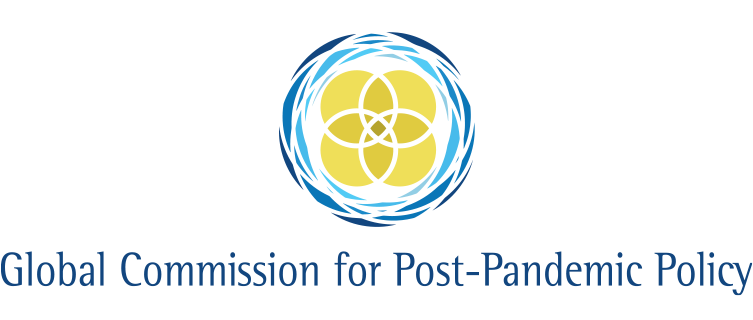Research Monitor
March 22nd 2021
Health
Testosterone and COVID-19
A new paper published in iScience reveals evidence that drugs suppressing androgens (male sex hormones) may offer protection from COVID-19.
That men are more likely to be infected with and die from COVID-19 remains one of the great puzzles of the COVID-19 pandemic. For this reason, medical experts have speculated that sex hormones must play an important role in regulating COVID-19 infection. To investigate the role that androgens play in this story, Qu Deng, Reyaz ur Rasool, Ronnie Russell, Ramakrishnan Natesan and Irfan Asangani from the University of Pennsylvania used human and mouse cell cultures to probe the impact of testosterone on SARS-CoV-2 infection.
The study’s results are significant. The authors show that two specific receptors on the surface of human cells—ACE2 and TMPRSS2—which bind to the spike proteins dotting the surface of the SARS-CoV-2 virus and allow the virus entry into the cell, are also regulated by testosterone. To test what happens when these receptors are blocked, the researchers applied the clinically proven testosterone inhibitor Camostat. The authors found that the androgen-suppressing medication prevented the entry and replication of the virus in cells—successfully rebuffing infection.
The findings bolster the results of a recent Brazilian clinical trial which reported that the use of proxalutamide—a new anti-androgen therapy—reduced mortality risk in COVID-19 patients by 92% and shortened the median hospital stay by nine full days relative to standard care.
Mental health and COVID-19
A new paper published in Psychiatry Research investigates the impact of the COVID-19 pandemic on the mental health of young people in the United Kingdom.
The COVID-19 pandemic and the consequent restrictions imposed by governments worldwide have had profound social and psychological effects, particularly for young adults. To better understand these impacts, Simon Evans, Erkan Alkan, Jazmin Bhangoo, Harriet Tennebaum and Terry Ng-Knight from the University of Surrey administered a survey to 254 undergraduates (219 females, 35 males) immediately before the pandemic and then later in the midst of it.
Their results make for concerning reading. The survey measured sleep quality, depression and anxiety symptoms, well-being and loneliness, and alcohol use. It found that the COVID-19 pandemic had more than doubled the levels of clinical depression in those surveyed. The figure rose from 14.9% before the pandemic to 34.7% in the middle of it. There was also a noticeable shift in young people’s waking hours, with young people waking up and going to sleep later than pre-pandemic.
Interestingly, despite a worldwide increase in alcohol sales during the first lockdown, researchers identified a significant decrease in alcohol consumption amongst the group. They attribute it to the social restrictions in place over the survey period. This suggests that young people are not turning to alcohol as a coping mechanism—a small bright-side in a series of otherwise gloomy results.
Economics
A new paper published in the Centre for Economic Policy and Research (CEPR) publication COVID Economics investigates the impact of the COVID-19 pandemic on inflation in the United States.
In most societies, the COVID-19 pandemic has significantly altered people’s consumption patterns. This presents a challenge to government statisticians because the basket of goods usually used to calculate the Consumer Price Index (CPI)—and hence, inflation—may have thereby become misleading. To investigate whether the American Bureau of Labor Statistics inflation data has been impacted in this way, Alberto Carvallo from Harvard University used publicly available data on debit and credit card transactions to build an alternative COVID-19 CPI Index.
The study suggests that the current CPI basket is underestimating inflation in the American economy. In the first three-months of the pandemic, Carvallo demonstrates that inflation was notably higher than the CPI Index reflected. This is because people spent more money on food and groceries (where prices were rising) and were prevented from spending on things like transportation (where prices were dropping). By May 2020, Carvallo estimates that inflation had risen to 0.95%—compared with only 0.13% using the official CPI basket.
The difference narrowed in the following months, but by September Carvallo’s COVID-19 CPI Index still pegged the inflation rate at 1.90%, compared with the 1.41% quoted in official statistics. The same methodology was applied to 19 additional countries, where Carvallo found similar evidence for higher COVID-19 inflation than officially reported in 12 of them.
Politics
A new paper published in the National Bureau of Economic Research (NBER) Working Paper Series investigates the diffusion of state-level COVID-19 restrictions in the United States.
In America, many states are tightly intertwined with their neighbours, both politically, economically and socially. The archetypal example is the tri-state area, consisting of New York, New Jersey and Connecticut which—because of New York City—operates essentially as a single unit in terms of employment, commuting, entertainment and retail-shopping. The result is that the imposition of COVID-19 restrictions in any one state directly impacts other states and their policy choices.
To investigate the importance of this effect, Zhihan Cui, Geoffrey Heal and Lu Liu from Columbia University and Hoard Kunreuth from the University of Pennsylvania analysed empirical data on state level COVID-19 restrictions through the pandemic. The academics found that when governors imposed state-wide mask-mandates, the choice was almost completely uncorrelated with a state’s COVID-19 case rate. By contrast, it was closely correlated with the fraction of other states already imposing the measure.
The result, however, was only true for states governed by the same political party. In Democratic states, the policy trends both in other blue states and swing states made a significant difference, with a small effect from the decisions of Republican-controlled states. In red states, the effect was even more stark—with no measurable impact of policies in blue states, whatsoever.
GCPPP Newsletter
We now publish a weekly newsletter to inform friends and supporters of the Global Commission’s progress and to provide updates when new content is published. Please sign up here:








